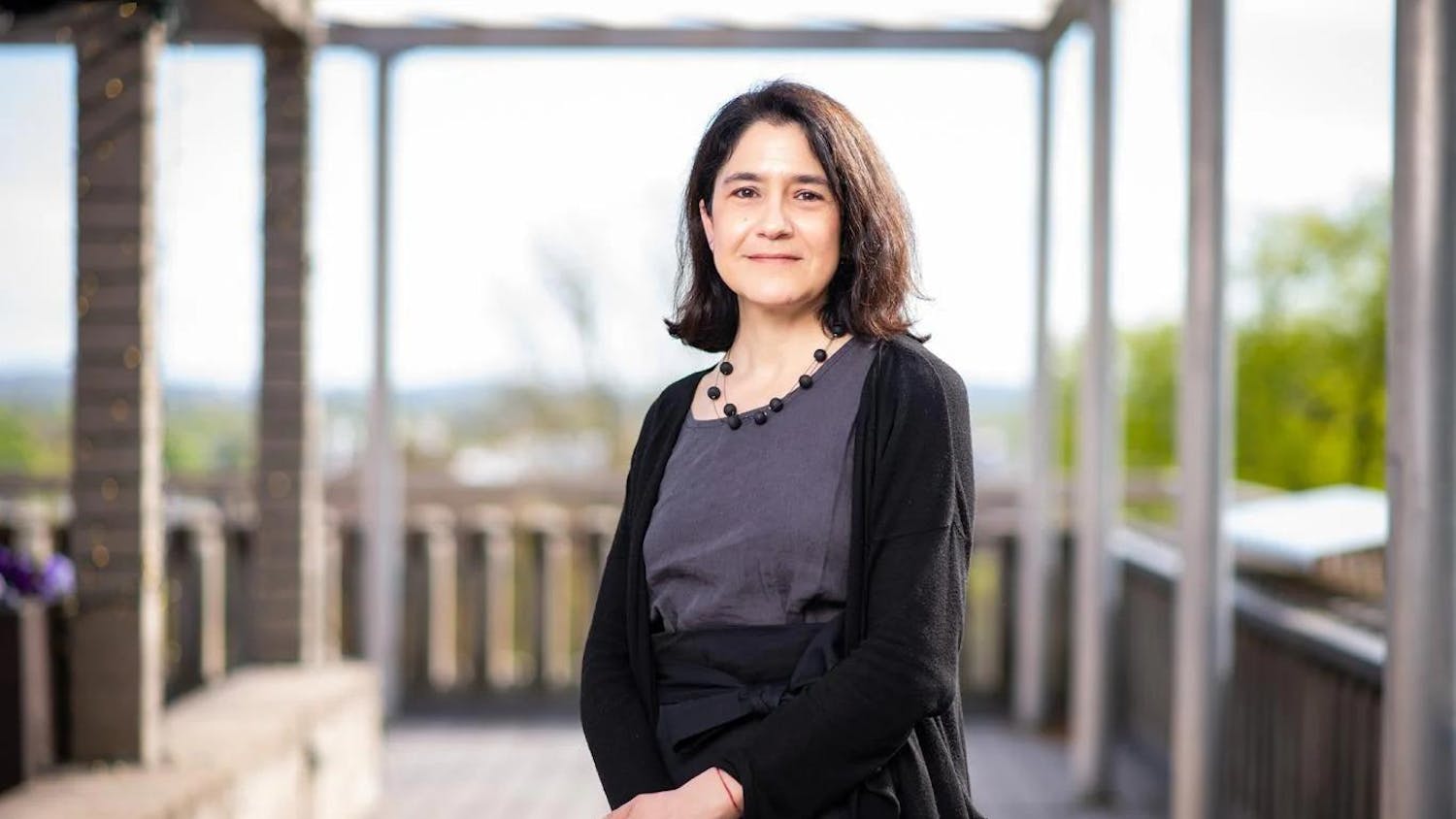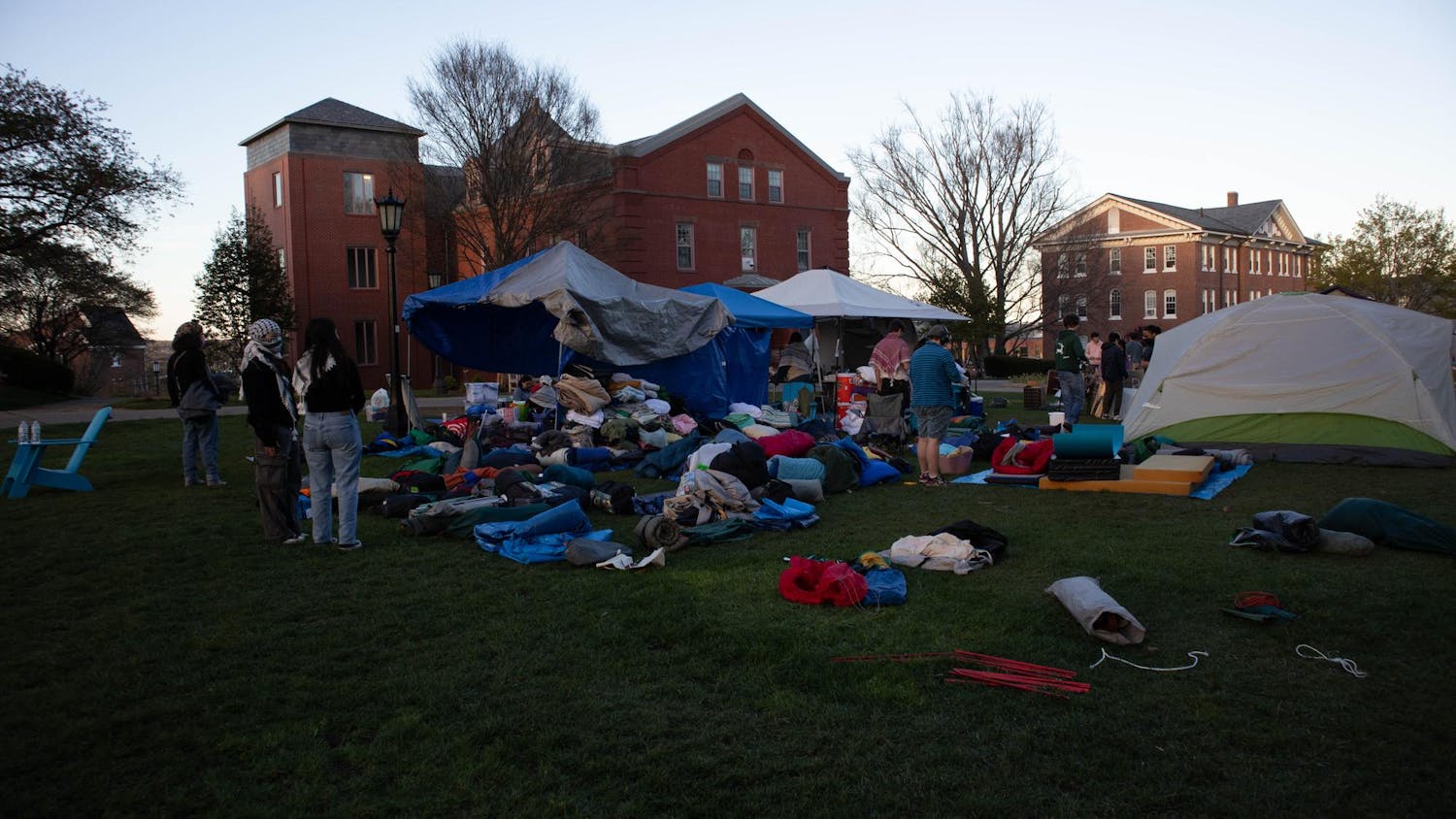The Women’s Center held its ninth annual Gender and Culture symposium titled “Sex and Accessibility” on Friday, at which student and guest speakers explored issues surrounding sexual education, comprehensive healthcare and more.
The event, held in Dowling Hall, began with a panel titled "Queering Sex Ed, Explaining Abstinence, and Intersectional Healthcare." The panel highlighted the differences in accessing and exploring sexuality and information about sex through inequalities across geography, class, race, cultures, abilities and identities.
The panel was followed by a talk titled “Making Way for Disabled Sex Educators,” presented by Disability and Sexuality Access Network cofounders Amber Dipietra and Cassandra Perry. Later, activist Andrew Gurza, who has spoken internationally on the topics of sex and disability, delivered the keynote address. The event concluded with sophomore Akbota Saudabayeva's presentation titled “The Body in Poetry.”
The panel began with first-year Lee Romaker discussing the history of sexual education in the United States. According to Romaker, before sex education was taught in the public school system, sex-related information was reserved for the family and religious spheres, which often included scare tactics to inspire fear and framed premarital sex as immoral.
However, Romaker cited the Teach Safe Relationships Act of 2015 to counter these notions.
“In 2015, the Teach Safe Relationships Act was introduced into the U.S. Congress, which would require sex education that focused on sexual coercion and sexual communication,” Romaker said.
The Teach Safe Relationships Act died in committee, however, but was implemented at the state level to varying degrees, according to Romaker.
Romaker emphasized that discrepancies across states persist. Due in part to the minimal number of states that require medically accurate sexual education and in part to the often heteronormative focus of the sexual education, teenagers often turn to the internet for more inclusive and comprehensive sexual education.
Romaker predicted that the internet — with the benefits of accessibility but the downsides of misinformation and unrealistic presentation — will most likely be a source of information for sexual education until queer and medically accurate sexual education is implemented in public schools.
Sarah Lewinger, a knowledge management specialist at Pathfinder International, an international sexual reproductive health nonprofit, discussed her previous research on the effects of abstinence-only sexual education on students’ self-esteem , bodily integrity and sexual health decisions.
Lewingerasserted that research in the United States shows the ineffectiveness of abstinence-only education; however, comprehensive sexual education, which is medically accurate and objective, promotes safer sexual behavior among young people.
Lewinger explained, however, that the lack of substantial research on such education in sub-Saharan African countries led her to further focus her work. In Uganda, abstinence-only education dominates, in part due to high sexual risk factors stemming from one of the highest rates of HIV in East Africa, according to Lewinger.
Lewinger explained that Ugandan girls and women are "untapped" sources of knowledge. In her research, she conducted 33 interviews with them to better understand their experiences, what they had been and wished to be taught, and what they believe others should be taught.
“I chose to discuss the experience of sexual education with young Ugandan women, recognizing that their experiences are rarely heard and considered in the formulation of policies that intimately affect their lives,” Lewinger said.
Lewinger concluded from the interviewees' responses that implementing a culturally relevant and comprehensive sexual education in the region would increase female empowerment, lead to safer sexual health decisions and could combat gender-based oppression.
Hannah Robins, a doctoral student studying clinical psychology at Suffolk University, joined the panel to discuss how issues in healthcare interact with identity.
To ensure productive and appropriate healthcare, Robins explained that there are many factors that affect positive patient-provider relationships for gender and sexually diverse populations in health care.
Robins cited specific examples of heteronormativity in healthcare, but also emphasized that it can be conveyed in numerous ways.
“It can mean and look like many things, but among them are things like a lack of diversity in pamphlets, flyers, educational materials and posters in office settings,” Robins said. “It’s also conveyed in the language used by staff and clinicians, including but not limited to instances such as assuming the gender of a patient's partner or only using the term ‘mother and father’ when talking about family planning."
At the root of these practices of discrimination, neglect and stigmatization, Robins said that clinicians across healthcare fields are vastly undertrained for “competent and sensitive care for gender and sexual minorities.”
Robins referenced one study that concluded overwhelming numbers of obstetrician-gynecologists reported a lack of education on lesbian health and no training on the care of transgender patients.
It is important to consider intersectionality in health care as discrimination in healthcare disproportionately affects racial, gender and sexual minorities, according to Robins.
Robins added that to ensure inclusive care, key factors must be upheld.
“[These factors] include clinician knowledge about the specific health care needs of gender and sexual minorities, medical confidentiality and the use of inclusive language and research question[s] asking such as ‘how would you like me to refer to you,’” Robins said.
Women's Center symposium focuses on intersectionality in sexual education, healthcare

The Women's Center at 55 Talbot Ave. is pictured on Feb. 19, 2019.





